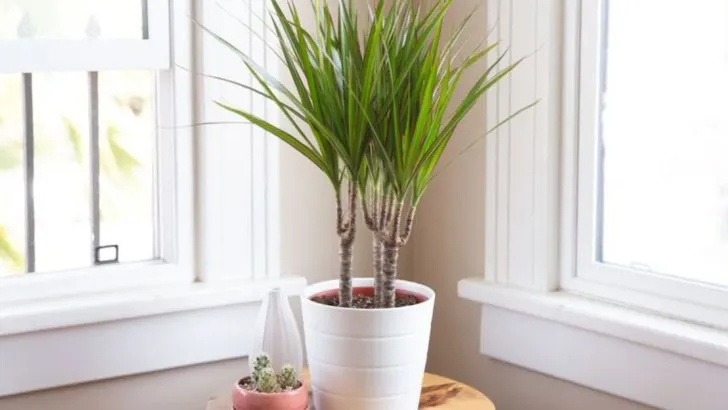Watering your plants is essential, but using the wrong type of water can harm sensitive species. Many plants, particularly those that are delicate or native to specific environments, can be negatively affected by the chemicals and minerals found in tap water. These elements can lead to leaf burn, stunted growth, or other health issues. Here are 12 sensitive plants you should avoid watering with tap water and some tips on how to care for them properly.
Spider Plant
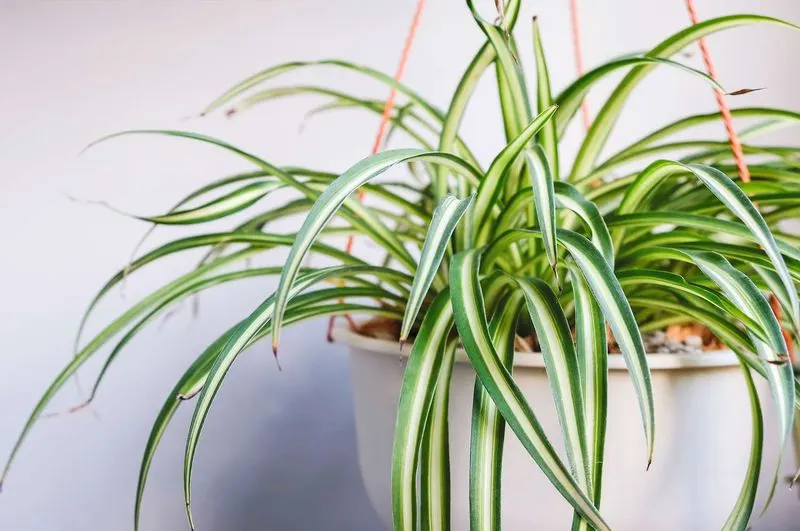
Spider plants, with their attractive arching leaves, are sensitive to the fluoride in tap water. This chemical can cause the leaf tips to brown and curl, detracting from their natural beauty. To prevent this, opt for filtered or distilled water, which keeps the leaves lush and healthy. Spider plants also prefer slightly cooler water, so room temperature is ideal. Regularly misting the leaves can help maintain humidity, especially in dry climates. By using the right water and care, you ensure your spider plant remains a striking feature in your indoor space.
Peace Lily
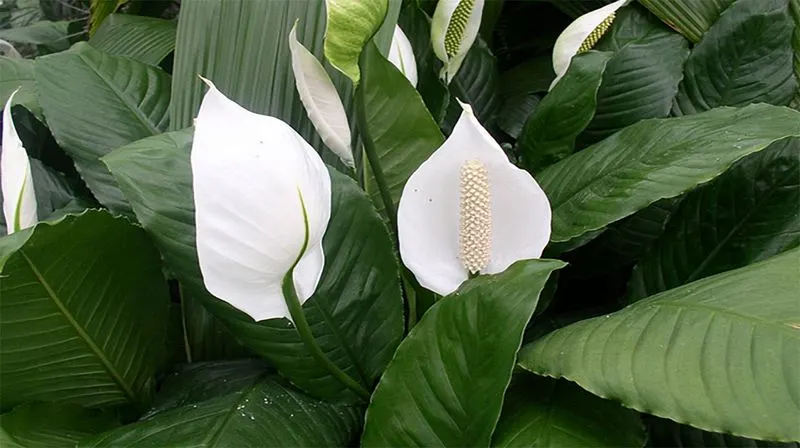
Peace lilies are known for their air-purifying properties, but tap water with chlorine and fluoride can be detrimental. These chemicals often lead to leaf browning, affecting their lush appearance. To keep peace lilies healthy, always water them with distilled or rainwater. These plants thrive in moist conditions, so ensure the soil remains consistently damp but not waterlogged. Additionally, wiping the leaves with a damp cloth can remove dust and improve their ability to process light. Proper water selection is key to maintaining a vibrant peace lily.
Boston Fern
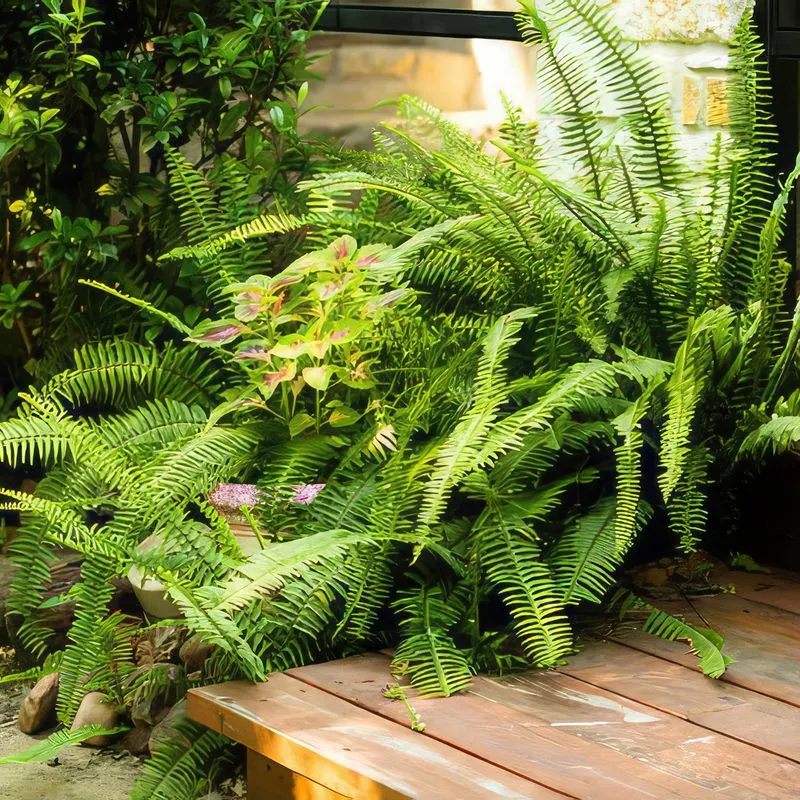
The Boston fern’s delicate fronds are particularly vulnerable to the chemicals found in tap water. Fluoride and chlorine can cause leaf tips to brown and die back, damaging the plant’s appearance. Utilizing rainwater or distilled water helps maintain the fern’s vibrant greenery. Regular misting will also aid in keeping humidity levels high, which is crucial for ferns. Positioning the fern in a spot with indirect sunlight and ensuring the soil stays evenly moist will promote healthy growth. Attentive watering practices will keep your Boston fern flourishing beautifully.
Calathea
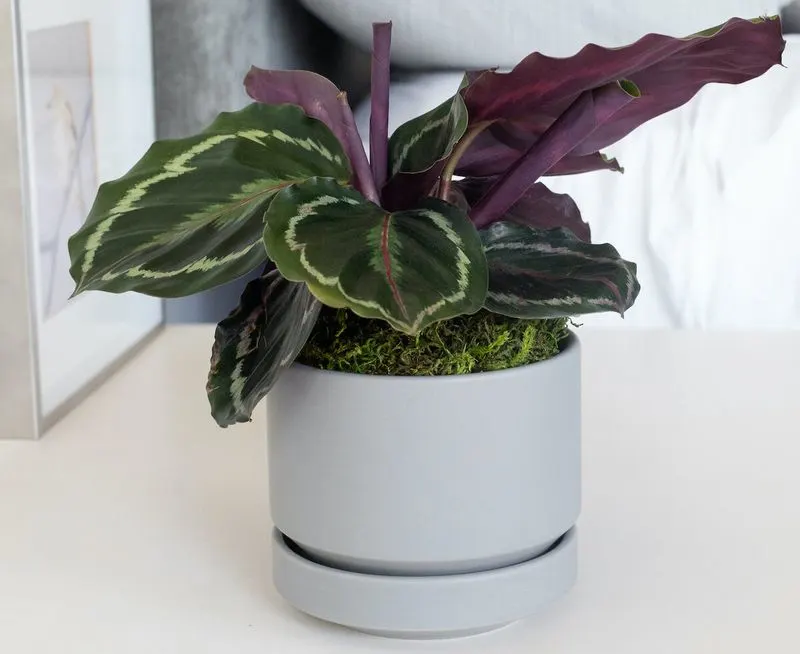
Calathea plants are admired for their stunning, variegated foliage, yet tap water can mar their appearance with leaf edge browning and spotting. The high mineral content, especially fluoride, is often to blame. Using filtered or distilled water helps preserve the vibrant patterns. Calathea prefers humid environments, so frequent misting or a nearby humidifier can be beneficial. Placing the plant away from direct sunlight helps prevent leaf scorch. With the right water and care, Calathea can become a captivating focal point in your collection.
African Violet
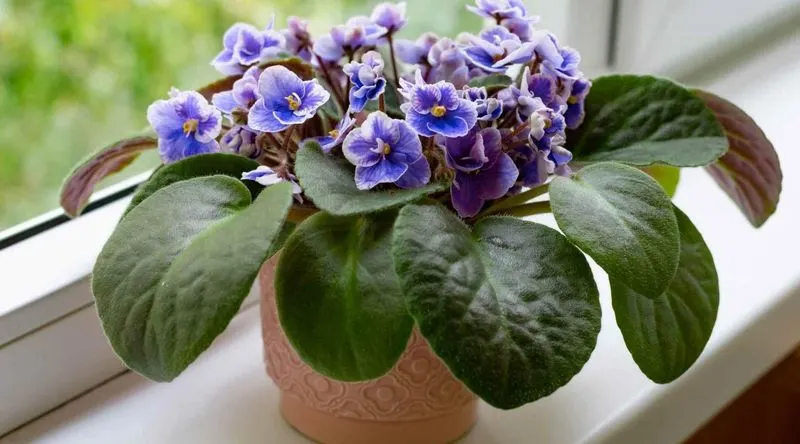
African violets, cherished for their colorful blooms, are sensitive to water quality. Tap water containing chlorine and fluoride can cause leaf spotting and discoloration. Rainwater or distilled water is recommended to avoid these issues. Bottom watering, where the plant absorbs water through drainage holes, helps prevent leaf spotting from splashes. Ensure the soil is evenly moist, and avoid getting the leaves wet to preserve their delicate texture. This approach keeps African violets thriving, allowing their vibrant flowers to take center stage.
Orchid
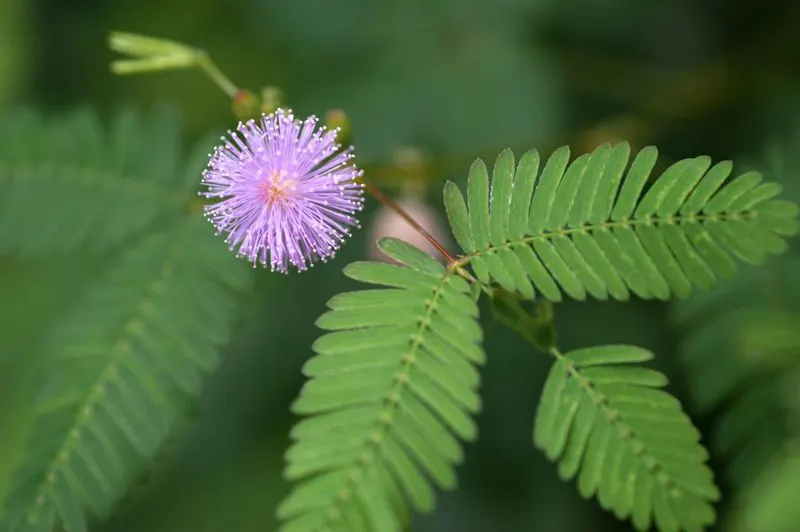
Orchids, with their exotic blooms, demand specific care, particularly concerning water quality. Tap water, high in minerals and chlorine, can be harsh on their roots. Opting for rainwater or distilled water minimizes the risk of root damage. Orchids enjoy a humid environment, so placing them near a humidity tray or misting occasionally can be beneficial. Ensure the potting medium remains damp but not soggy, allowing for proper aeration. With attentive care and the right water, orchids will continue to grace your home with their refined elegance.
Dracaena
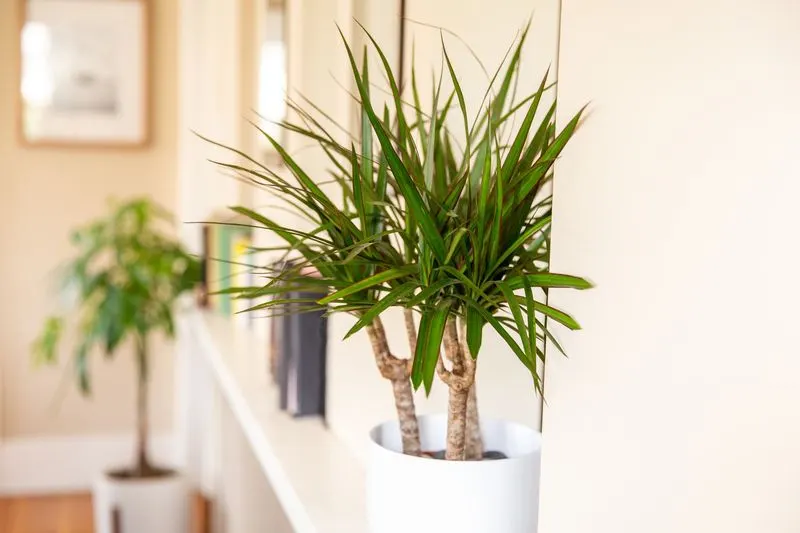
Dracaena plants, popular for their easy maintenance, can suffer from tap water containing fluoride and chlorine. These chemicals lead to leaf browning and tip burn. Using distilled or filtered water prevents these issues and promotes healthy foliage. Dracaenas prefer well-drained soil, so allow the top layer to dry out between waterings. Their adaptability to low light makes them a versatile choice for various indoor settings. By choosing the right water and observing their light needs, Dracaenas can remain a robust part of your indoor garden.
Bamboo Palm
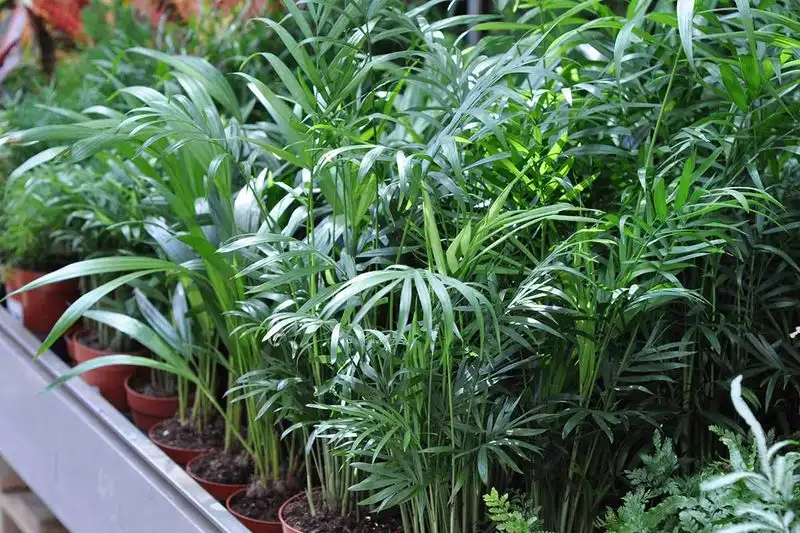
Bamboo palms thrive in humid environments, but tap water can introduce unwanted salts and chemicals, affecting leaf health. These contaminants often result in browning and yellowing of the foliage. Choosing rainwater or distilled water for hydration ensures pristine leaf quality. To mimic their natural habitat, maintain consistent soil moisture without waterlogging. Positioning the plant in bright, indirect light encourages vigorous growth. Bamboo palms add a tropical feel to any space, and proper watering practices will keep them in peak condition.
Red-Edge Dracaena
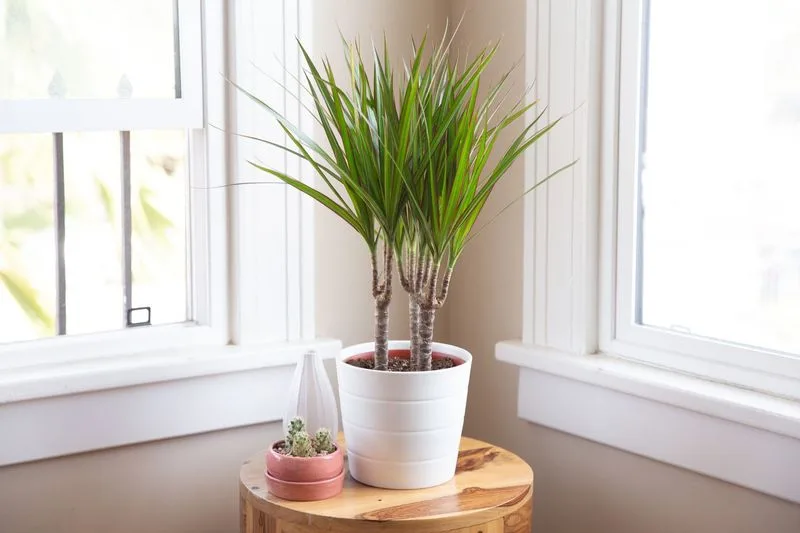
Red-Edge Dracaena, known for its eye-catching foliage, is vulnerable to tap water’s mineral content. Excessive fluoride can lead to unsightly leaf browning, detracting from its vibrant appearance. Opt for distilled or rainwater to keep the leaves healthy and vibrant. This plant thrives in well-drained soil, so ensure proper drainage to prevent root rot. Moderate indirect light is ideal, allowing the foliage to maintain its striking color contrast. By providing optimal watering and lighting conditions, the Red-Edge Dracaena will continue to impress.
Fiddle Leaf Fig
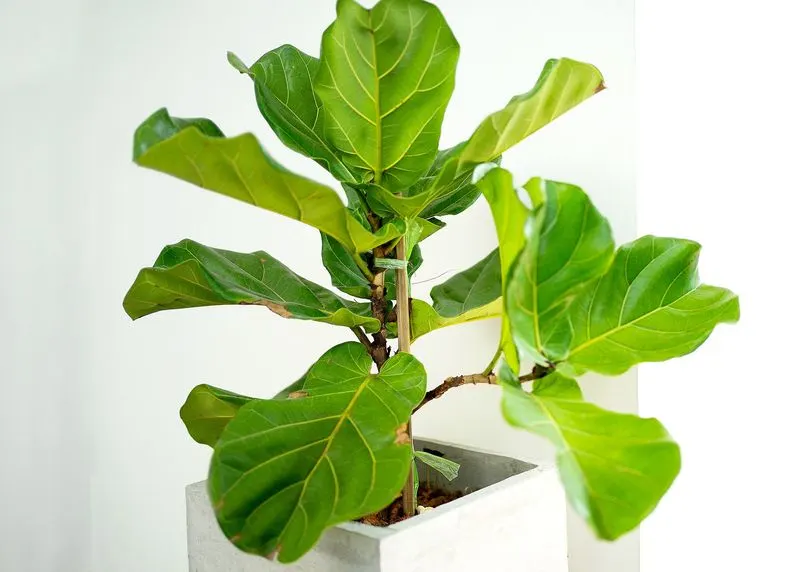
The Fiddle Leaf Fig, with its bold foliage, demands attention but requires gentle care regarding water quality. Tap water can introduce minerals that lead to leaf spotting and edge browning. Using distilled or filtered water helps maintain its glossy, healthy leaves. This plant thrives in bright, indirect sunlight, making it an ideal centerpiece for well-lit rooms. Ensuring the soil dries slightly between waterings prevents overwatering, which can be detrimental. With the right balance of light and water, the Fiddle Leaf Fig will flourish as a statement piece.
Jade Plant
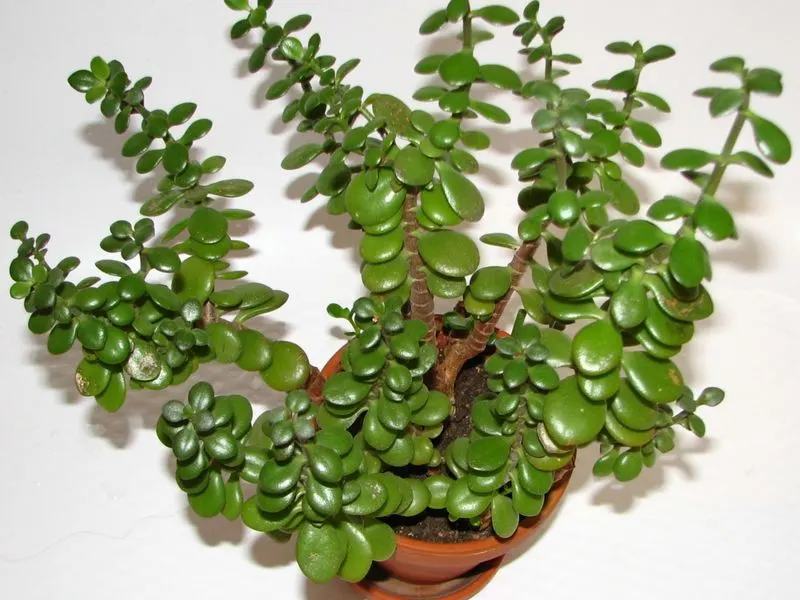
Jade plants, beloved for their succulent leaves, are sensitive to tap water’s mineral content. Excessive salts can lead to leaf yellowing and drop. To keep these hardy plants thriving, opt for rainwater or distilled water. Jade plants prefer dry conditions, so allow the soil to dry out completely between waterings. They thrive in bright light, making them perfect for sunny windowsills. By choosing the right watering method and environment, Jade plants will remain robust and continue to be a delightful addition to your home.

